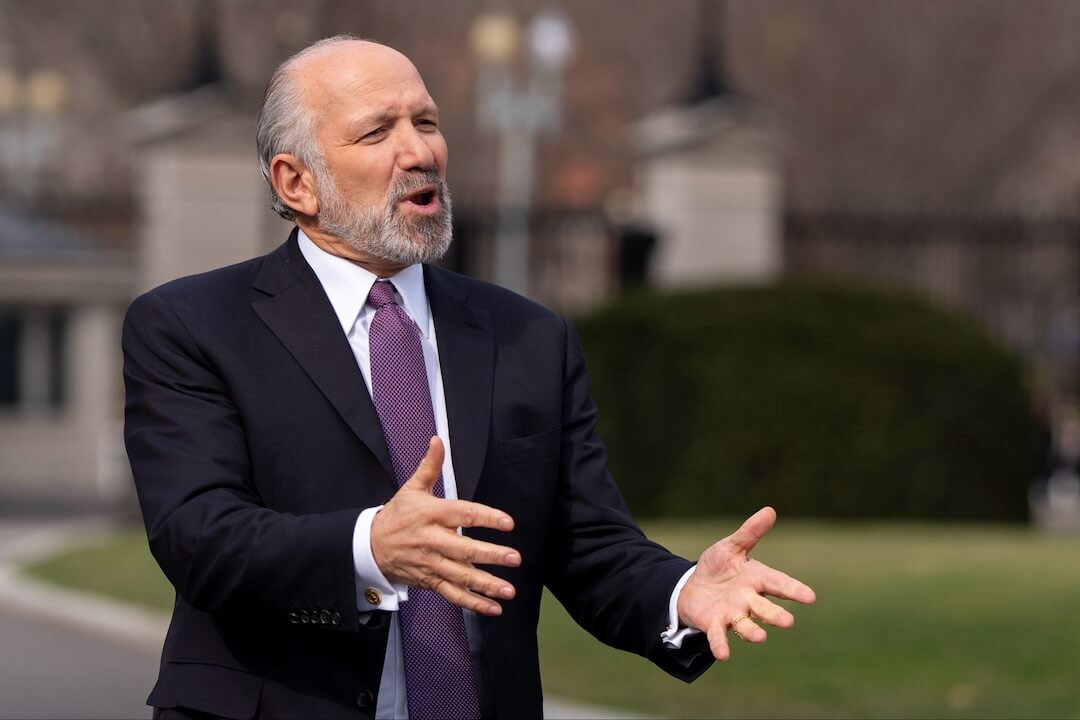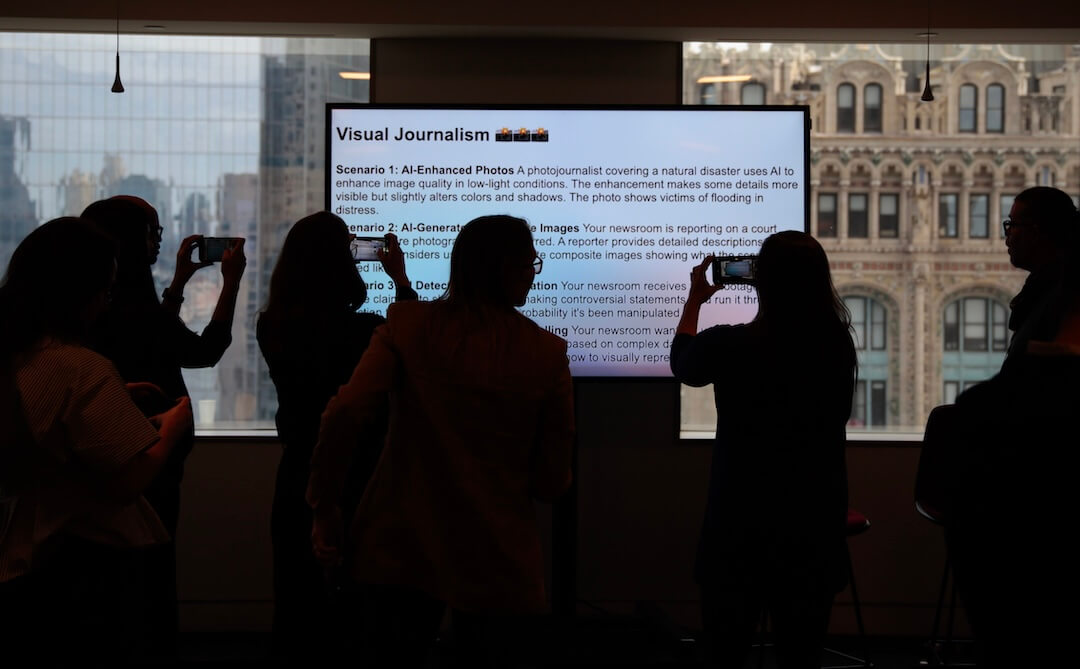In January, the closely watched American Journalism Project announced its biggest regional news effort yet — a $20 million commitment with three Houston foundations to create a new nonprofit news outlet there.
Some things were missing. Like a name for the new outlet beyond the place-holding Houston Local News Initiative. Or an editor or CEO, both to be named after a search later this year. Or an editorial mission beyond answering the Houston “community’s call for more information that meets their needs.”
The thriving nonprofit journalism movement of recent years has grown with a lot of mutual cheerleading and big new financial commitments. But reaction from within Houston’s existing media ecosystem ranged from skeptical to icy.
Houston Chronicle business columnist Chris Tomlinson weighed in under the headline. “Good intentions are dangerous for Texas journalism.” If the $20 million is just seed money, as the sponsors said, with a sustaining revenue stream to be developed later, Tomlinson said, they may not realize how challenging that could prove.
In a conversation, Tomlinson was less temperate. It’s “the height of billionaire arrogance,” he told me, that “self-described venture philanthropists” have decided they know better about what’s needed in local journalism and how to create it than the hundreds of professionals already at work in Houston on the same problem.
Houston is not exactly a news desert. Besides the Chronicle, it boasts four commercial TV stations, strong public radio and a Black newspaper, along with other ethnic media — all on the lookout for unmet needs and fresh areas of coverage.
AJP believes news ought to be free. So the initiative will not seek paid subscriptions. It does plan to collaborate by offering what it produces to other outlets.
Will they use it? Both Nancy Meyer, publisher of the Chronicle, and Lisa Trapani Shumate, CEO of Houston Public Media, told me they were willing to consider it but would need to see the content and judge its quality before saying yes.
Vague by design
Turns out there is a considered reason for the lack of specifics on the Houston initiative’s plans at this stage, which I found out by talking with AJP CEO Sarabeth Berman and consultant Tom McGeveran.
Soon after AJP launched in 2019, Berman told me, she began hearing from foundations animated by the idea of helping journalism given its critical function for informed citizens and democracy.
But they wanted that help to be targeted geographically to their home base, rather than chosen from a pool of national proposals.
To capture the opportunity, AJP decided it needed to invent a startup process.
The work begins with extensive interviews and community engagement sessions. Responding to Tomlinson’s thesis, Berman told me, “This is not a bunch of billionaires coming in (with a launch plan). … It’s the result of two years of research … what we found by listening.”
The community involvement will continue into the next phase, Berman explained. The hiring of an editor-in-chief is meant to be “an open process. … We expect to have a community panel interviewing the candidates.” A six-person search committee — including representatives of the local philanthropies and several Rice University executives — will have the final decision.
Living in the city already “will not be a prerequisite” for the top editor, Berman added, but “Houston roots will definitely be a part of the criteria.”
Once hired, the CEO and the editor will determine coverage and a business plan, targeting to hire 30 to 40 journalists and be up and running by early 2023.
Where the AJP is coming from
The American Journalism Project announced itself with a splash in the fall of 2018. Its goal was to build up as quickly as possible to a $1 billion venture philanthropy fund. Co-founders were John Thornton, who had provided the initial investment to launch The Texas Tribune, and Elizabeth Green, who built the Chalkbeat collection of education sites.
Given the size and success of The Texas Tribune and Chalkbeat, those were gold-plated credentials.
Three-and-a-half years later, AJP is up to $90 million in commitments along with its local partners — a portfolio of 32 that includes many stars of the digital startup universe like VTDigger, MLK50: Justice Through Journalism, Montana Free Press and Mountain State Spotlight.
Berman came to her position not with a journalism background but from executive roles at large international education philanthropies — Teach for China and Teach for the World.
At AJP, she has assembled a staff of 20 that includes grant officers and coaches called “success partners” for the organizations it funds. Its focus is on business sustainability rather than direct funding of reporting and editing positions.
When I spoke to Berman earlier, at the start of 2021, she said, “We are now particularly looking for organizations that can grow and scale … that have the talent and conditions to become anchors for their state or metro.” Boutique outlets with two or three employees and a narrower subject focus, part of the original plan, were of less interest.
The Houston initiative matches that go-big description. It’s the third in a series. Three more, in cities not yet announced, are in earlier stages of development.
In Wichita, partnering with the city’s community foundation, AJP chose to expand the reach of the Kansas City Beacon, itself a 2020 launch, to a second site in Wichita. The Wichita Beacon began publishing last July.
Next up was Cleveland. That $6-million venture is named the Ohio Local News Initiative, reflecting ambitions to grow into a statewide network if all goes well. It hired an editor-in-chief Tuesday with plans to go live later this year.
The two AJP staffers assigned to the startups — Michael Ouimette and Loretta Chao — are both alums of Vice. Consultant McGeveran worked at the New York Observer in its glory days in the late 1990s, went on to co-found Capital New York and stayed on after it was sold to Politico.
That suggests, as Berman says, that below the surface in the Houston effort is work by a cluster of experienced media executives. (The Vice connection also hints that video and audio will be a substantial part of the storytelling mix.)
At the directions of its founders, AJP decided on principle that it wants the journalism it sponsors to be free and available to all. Donations are solicited, but you won’t see paid subscriptions as, for instance, at the soon-to-launch Baltimore Banner, which expects them to account eventually for about half its revenue.
Why the devotion to free? The price of print newspaper subscriptions has surged past $400 in many cities. Their paid digital sites are less expensive but also protected by paywalls. The upshot is that many residents won’t see a newspaper’s journalism because they can’t afford it. Add to that, Berman said, surveys have consistently shown an even wider group is unwilling to pay for digital news.
Is the premise then that the Chronicle (and to a lesser extent, other legacy media) is failing a big portion of Houston and its sprawling metro suburbs.
An indictment is not the intent, Berman told me. However, parts of AJP’s first impact report released in late March seem to say otherwise. A description of what the project found in its community listening sessions for the three startups included this stinging criticism:
Many communities feel they have never been served by local news outlets, and some say they’ve been harmed by it: Across backgrounds, people report that their local newspapers do not reflect, acknowledge or serve the daily information needs of their local communities. This experience is particularly evident in communities of color, for whom the narratives in local news are frequently inaccurate and harmful.
Partner or disruptor?
One perspective on the AJP and Houston Local News Initiative effort is that if the end result is more journalism, of course that’s a good thing. I would add (though the sponsors don’t say) that if some feathers are ruffled in the process, so what?
That circles back to the question, though, of what those working on the initiative expect that journalism to be. In conversation with Berman and McGeveran, I was able to glean more:
- While minority and lower-income residents will figure both as news subjects and news consumers, that’s not the sole focus. Day-to-day news in remote geographies will also be part of the strategy.
- Similarly, investigative and accountability journalism will be in the mix but not dominant. “We’re not ProPublica,” I was told. Doings at an undercovered school district or a big community fair — smaller news that now slips through the cracks — will be part of the mission.
- Given Houston’s growing and varied first-generation ethnic communities, at least some of the content will be in multilingual formats. “Last-mile distribution” of information from institutions like local health departments to people not now being reached will be included.
- Since literacy is an issue for some in the targeted audience, “non-text multimedia formats and distribution across multiple platforms” are a goal.
- “The research covered a wide variety of neighborhoods, incomes, races, professions, languages and experiences (e.g. people who are formerly incarcerated), and political leanings,” Berman said. Knitting the interests of those diverse groups together will be part of the challenge.
- The project may train and use some non-journalists, recognizing that there have historically been hits and misses with that approach. In any case, the community panels will be part of an evaluation of what’s working.
This week’s appointment of Lila Mills as editor-in-chief of the Ohio initiative is suggestive. She has a background as a print journalist but more recently has been a community organizer in Cleveland, training and paying 500 residents to cover public meetings.
The Houston initiative is not predicated on “a direct or indirect criticism of what the Chronicle does,” Berman added. “We went into this with our eyes open. It’s one of the most successful regional papers in the country. … But is that sufficient? No, there are big information gaps.”
In an extended metro with a population of more than 6.5 million, AJP’s research suggests that the Chronicle and other media players can’t be everywhere.
Chronicle publisher Nancy Meyer, a recent arrival from the Miami Herald, noted in an interview the newsroom count dipped slightly during the pandemic but should be back to 205-210 by the end of 2022, essentially holding steady over four years.
In addition, the Chronicle owns 12 weeklies, another daily and a Spanish-language paper. For years they have published independently and also fed or added to coverage of stories away from the center of Houston that the metro undertakes.
Meyer said that she has yet to formally meet with the local sponsors but her initial impression has been, “If it thrives, more news could benefit us all.” But she also sees merit in columnist Tomlinson’s critique. Houston is not a news desert so “could it (the $20 million) be better spent elsewhere? Yes.”
Shumate, general manager of Houston Public Media, has a similar take. Its local radio newsroom is much smaller at 20, up from 14 in October 2020. It has also added several newscasts, podcasts and newsletters with more expansion expected.
“If their interest is to fill the gaps, of course that’s a good thing,” Shumate said, “but there is so much that is still unknown.” Like Meyer, she is open to using the initiative’s content but not yet sure what it will prove to be.
Does the initiative’s intent to solicit member donations and added philanthropic support compete with one of the station’s main sources of income? Maybe, said Shumate, but that sort of fundraising is not necessarily a zero-sum game.
(Many metro papers, including The Seattle Times and Tampa Bay Times, are now soliciting member and foundation support of their journalism, but the Hearst chain, including the Chronicle, does not, Meyer said. So there is no competition there. If the initiative resulted in some readers dropping their subscriptions, that would be a different story.)
Ann Stern, president and CEO of the Houston Endowment, has acted as the point person for the three local foundations. She made heads-up advance calls before the announcement and is following up now.
Stern is sensitive to concerns about duplication, she told me. “If we would displace (existing coverage),” she said, “that would be counterproductive.”
But the AJP process was close to an objective picture of many gaps that exist, she said, and also gave the donors a sense of the growth and what works in the nonprofit news sector. So duplication should not be an issue.
Right now, a group of six has been assembled as a search committee for the two top jobs, Stern said, and those selections could come as soon as the next several months. “If we do not get the right people in place,” she said, the initiative’s ambitions will be hard to realize.
The Houston Endowment, an 80-year-old foundation created by a lumber and real estate baron and his wife, has put up $7.5 million for the launch. So has the Kinder Foundation, whose founder’s business is in pipelines and other energy infrastructure. Like the Endowment, its gifts go to a variety of efforts to improve the city of Houston and its civic life.
The third partner, Arnold Ventures, committing $4 million, is a bit different. It was created by billionaire energy trader John Arnold and corporate lawyer Laura Arnold. The couple is giving away their fortune as fast as is feasible and their venture fund is national in scope with a staff of more than 100. The Houston Initiative represents a pivot back to local giving, but Arnold Ventures has made many large journalism gifts already — $2 million each to ProPublica, Kaiser Health News, the Center for Public Integrity and The Marshall Project. It has a division for journalism giving, headed by former Chronicle editor Jeff Cohen.
All this leads me to think that the initiative has plenty of knowledgeable journalism hands in its planning stages with more to come as it rolls out. So it’s not just a cluster of billionaires acting on their idea of a better way to do Houston journalism.
None of that was especially well-explained in the initial announcement. Plus, I wonder whether the concept of thinking big and going big at launch to the tune of $20 million risks overreaching. Or whether as the initiative evolves it could turn into a competition for talent, if not dollars.
I think the most compelling part of Tomlinson’s critique is that Houston is hardly a news desert. AJP’s Berman said that in the project’s short life, she and her colleagues have decided that neglected pockets within big cities are a variation of a desert.
Still, the Houston Initiative fits a pattern. Whether it’s nonprofit startups or expanded local efforts by public radio affiliates, or for-profits like Axios Local, or even metro vs. smaller outlets within a chain like Gannett, the money flows to where the money is. The news-rich are getting richer as smaller, more remote communities remain news-poor.
Correction: The Chronicle owns 12 weeklies. Also, this article was updated to note that residents who report for the Ohio Local News Initiative are paid.







